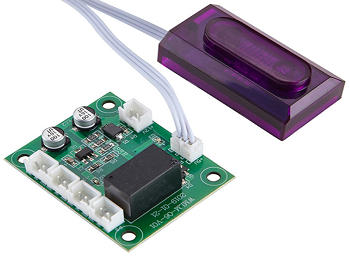The rapid development of 5G technology is reshaping the electronics industry, and printed circuit boards (PCBs), serving as the "nervous system" of electronic devices, particularly sensor substrates, play a central role. The integration of sensor technology and 5G opens up new possibilities in areas such as the Internet of Things (IoT), smart cities, and autonomous driving.
High-Frequency Materials: Supporting 5G Signal Stability
5G networks utilize high-frequency bands such as millimeter waves (above 24 GHz), placing higher demands on the signal transmission performance of sensor substrates. Traditional FR-4 materials struggle to cope with signal loss and stability issues, so high-frequency materials such as PTFE (polytetrafluoroethylene), ceramic substrates, and LCP (liquid crystal polymer) have become mainstream. These materials offer low dielectric constants and low dissipation factors, enabling high-speed and stable signal transmission.
For example, high-frequency materials from Rogers Corporation are widely used in communications equipment and sensor-equipped devices. With the advancement of 6G research, new materials such as graphene are expected to be introduced into sensor substrates, further enhancing performance.

sensor substrates
HDI Technology: Accelerating the Miniaturization of Sensor Devices
5G sensor devices are widely used in applications requiring miniaturization, such as IoT devices and wearables. Consequently, sensor substrates are increasingly adopting high-density interconnect (HDI) technology. HDI increases circuit density through microvia and buried via technology, integrating complex functions within limited spaces, thereby enabling miniaturization and higher performance in sensor devices. In addition, impedance control and crosstalk reduction are key design priorities to ensure signal integrity. Future advancements in 3D PCB and embedded component technology will drive sensor substrate designs towards more compact and efficient designs.
Thermal Management: Ensuring Stable Operation of High-Performance Sensors
5G sensor devices generate increased heat due to high-speed processing, especially during data processing and communication. Thermal management has become critical in sensor substrate design. Technologies such as metal core PCBs and embedded heat pipes are widely used, and high-thermal conductivity materials effectively enhance heat dissipation.
AI-assisted thermal simulation is also beginning to be used to optimize heat dissipation solutions and accurately predict heat distribution. In the future, the introduction of liquid cooling technology and high-performance heat dissipation materials will further enhance the reliability and service life of sensor substrates.
Green Manufacturing: Towards Sustainable Sensor Substrate Production
With growing environmental awareness, sensor substrate manufacturing is transitioning towards green practices. The growing demand for 5G devices has led to an increase in PCB production, but the chemicals and energy consumption of traditional manufacturing processes place a burden on the environment. As a result, lead-free soldering, low-volatile organic compound (VOC) materials, and recyclable substrate materials are being widely adopted.
In addition, research on bio-based materials is also advancing, providing new paths for sustainable sensor substrate production. The application of intelligent manufacturing technologies, such as automated production lines and digital twin technology, not only reduces environmental impact but also improves production efficiency and cost-effectiveness.
Intelligent Design: A Breakthrough in Efficiency and Performance
The design and manufacturing of sensor substrates are rapidly evolving with the introduction of artificial intelligence and machine learning. Electronic design automation (EDA) tools use AI algorithms to optimize wiring design, predict signal interference, and accelerate prototype development, significantly shortening R&D cycles and improving sensor substrate performance.
Smart factories leverage the Internet of Things and big data technologies to enable real-time monitoring of the production process, improving precision and efficiency. In the future, the deep integration of 5G and Industry 4.0 will drive sensor substrate manufacturing towards greater flexibility and customization.
Driven by 5G technology, sensor substrates are undergoing a comprehensive transformation in areas such as high-frequency materials, high-density dielectric (HDI), thermal management, green manufacturing, and intelligent design. As 5G applications expand in areas such as autonomous driving, smart cities, and AR/VR, the performance requirements for sensor substrates will further increase. 6G research and development is already showing signs of progress. Sensor substrates, as the cornerstone of next-generation communications technology, are poised for even greater advancements.
Sensor substrates are not only the support for electronic components but also key technology connecting the future intelligent world. Their continued evolution will unlock limitless possibilities in the 5G era.